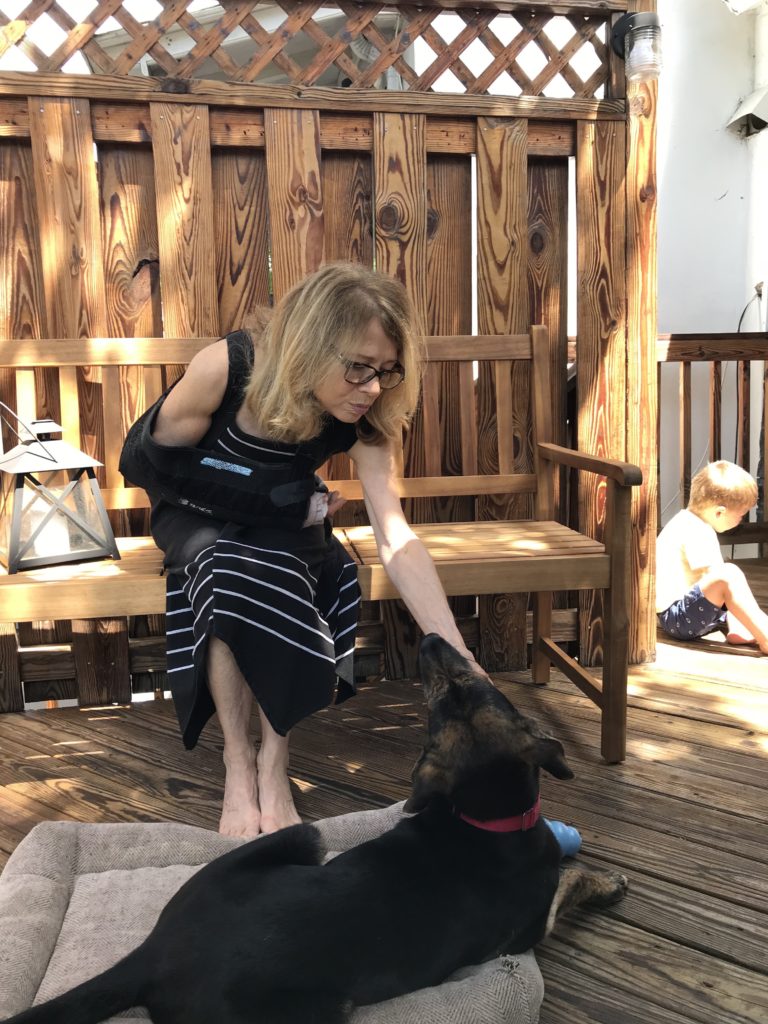Can you imagine breaking your arm and then describing the experience as “the most exciting journey I’ve had in decades”?!
. . . Well, if you were Chrish Kresge, a highly skilled Feldenkrais practitioner with two decades of experience, you just might!
Kresge broke her arm early this August while playing outdoors in New Hampshire with her grandson Drake and puppy dog Bear. She told me that at first she experienced a “complete loss of control” and feared that the injury might spell “curtains” for her career as a Feldenkrais practitioner in which her livelihood is dependent on the healthy functioning of her arms and hands.
However, after getting through the initial trauma of the event, seeing a highly skilled hand surgeon, and receiving generous support from many friends and colleagues, Chrish discovered that breaking her right arm had actually opened up a whole new world of learning. As she continues to recover, she has already returned to a busy schedule of teaching classes and workshops and working with individual clients. The experience has renewed her excitement about using novel movement strategies to help reorganize the brain for improved function.


One of the central strategies of the Feldenkrais Method is to help individuals discover their habitual movement patterns and then expand their options by introducing them to “non-habitual” movements. In my previous blog post, I invited readers to deliberately create a non-habitual experience for themselves, to see what they could learn.
But in Chrish’s case, there was no choice!
Still, in this interview, her cheerful optimism shines through as she describes how she has approached tasks such as putting on her contact lenses with her left hand – after having done it for twenty-five years with the right!
Chrish made this video of cutting up brussels sprouts with her non-dominant hand:
She faced many challenges and had to learn to slow down in order to discover the coordination for movement patterns she had never previously employed. But her enthusiasm for learning kept her going:
“I began to realize that when I slow down and have conscious actions, then I can be beautifully organized with my left hand. And what was so extraordinary was how quickly the brain filled in those parts that were not previously there . . . I was almost observing my brain literally buzzing and fizzing and actually filling in these parts!”
Don’t miss the end of the interview where Chrish shares a Feldenkrais strategy she used from the very first moments after her injury – even before she had received any medical attention – in order to remind the brain of how the functioning of the hand can be most efficiently integrated into the movement of the whole body.
Thanks for the interview Chrish – you’re an inspiration!!
